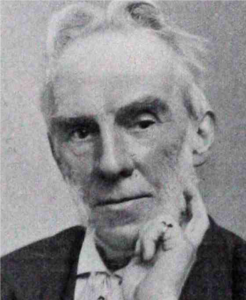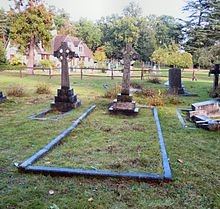
Founder of Ockenden Venture for refugee children.
The Ockenden Venture was founded in 1951 by three local schoolteachers and took its name from founder Joyce Pearce’s family home ‘Ockenden’ in White Rose Lane, Woking. The Ockenden Venture became a registered charity on 24th February 1955, under the War Charities Act 1940, its objective being to receive young East European people from post-World War II displaced persons camps in Germany and ‘to provide for their maintenance, clothing, education, recreation, health and general welfare’.
The project had begun in 1951, when Joyce Pearce (1915- 1985) persuaded Woking District Council to help support a holiday for 17 displaced East European teenagers at her sixth form centre at Ockenden House, as part of the Festival of Britain. An ad hoc arrangement was subsequently made for two of the girls to stay in Woking when they had obtained visas to attend school in England. The plight of older non-German speaking children in the refugee camps, for whom the educational provision was inadequate, provided the stimulus for Joyce Pearce, her friend and teaching colleague Margaret Dixon (1907-2001) and her cousin Ruth Hicks (1900-1986), headmistress of Greenfield School, Woking, to found the Ockenden Venture. The project was initially a modest one based solely in Woking, but houses were soon acquired in Haslemere, and in 1958 Ockenden took over Donington Hall near Derby as a school for boys. After World Refugee Year was declared in 1959, government money and increased donations enabled Ockenden to open new houses across Britain, and a small administrative staff was established. Direct help to adults was begun with the founding of The Ockenden Venture Family Trust, prompted by government relaxation of immigration laws to allow handicapped immigrants to enter the UK.
The Trust was registered as a war charity on 16th Feb 1960 and worked for the admission of parents of children already in the UK under Ockenden Venture schemes. Chiefly prompted by Joyce Pearce’s desire to provide assistance to Tibetan refugees in India, in October 1962 the general council of the charity agreed to amend the constitution of the Ockenden Venture to state its object was ‘to receive displaced children and other children in need from any part of the world and to provide for their maintenance, clothing, education, recreation, health and general welfare’, to allow the possibility of help to non-European children. Initially most help took the form of donations towards existing orphanages and schools, and sponsorship schemes, but Ockenden’s first direct participation in overseas-based work also began during the 1960s, with projects in India, northern Africa, and later south east Asia. In 1971, Ockenden merged with refugee charity, Lifeline. The most dramatic expansion of the Ockenden Venture came with the government’s decision in 1979 to accept Vietnamese ‘Boat People’ (who had begun leaving south Vietnam in large numbers after the invasion of Saigon by Communist forces in 1975) into the UK. Ockenden, Save the Children and the British Council for Aid to Refugees were given responsibility for a third of the country each to arrange for reception and resettlement of incoming families (Ockenden covered Surrey, the Midlands, the North West, North East, North Wales, Gosport and the Portsmouth area of Hampshire. The Birmingham office was responsible for organising resettlement; support was provided through support group liaison officers and support groups from the local communities). The three agencies operated under the umbrella of the Joint Committee for Refugees from Vietnam (JCRV) which was established by the Home Secretary in October 1979 under the chairmanship of Sir Arthur Peterson. Ockenden opened 25 new centres in response to the crisis, and by the end of the government programme in 1982, found itself a changed organisation, with a large workforce in formal salaried employment where before the organisation had been principally voluntary or semi-voluntary. During the early 1980s, Ockenden continued to receive refugees and to add to its projects overseas.
The death in 1985 of Joyce Pearce, who had continued as the driving force in the charity for 30 years, prompted questioning of the future aims of Ockenden. Several years of dissension followed over the managerial structure and the ‘ethos’ of the organisation, which from being a small charity almost unique in its objects, now found itself one among many charities involved in refugee work. The burden of maintaining Ockenden’s UK refugee accommodation to modern standards became an increasing argument for concentrating effort on overseas projects. Houses were closed during the 1990s, until only Kilmore House, Camberley, a home for severely disabled Vietnamese orphans, remained in 2001.
In 1999, the Ockenden Venture became Ockenden International, and concentrated nearly all its work overseas, in Sudan, Afghanistan, Cambodia, Pakistan, Iran and Uganda. Nowadays, Ockenden International operates purely as a funding agency, having transferred many of its programmes to local organisations.






